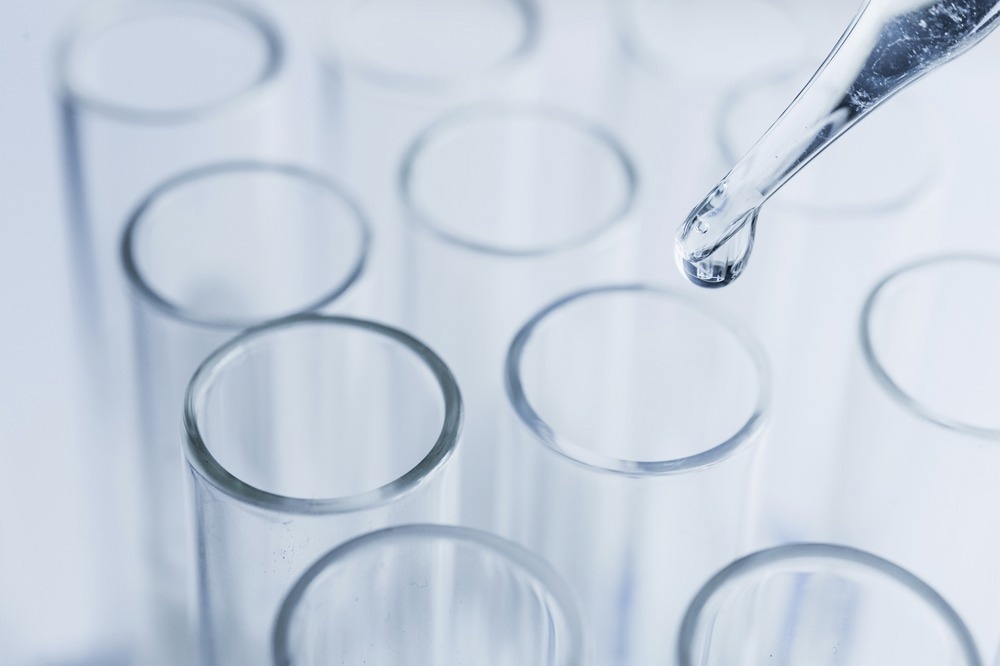In this interview conducted at SLAS EU 2023 in Brussels, Belgium, we spoke to Richard Hammond, Chief Technical Officer at Sphere Fluidics, about Sphere Fluidics' microfluidic picodroplet technology and more.
Please could you introduce yourself and Sphere Fluidics as a company and your current role at Sphere Fluidics?
I am Richard Hammond, and I am the Chief Technical Officer at Sphere Fluidics. I joined the company six months ago, but before this, I worked in product development within life sciences and healthcare for 25 years. I am trained as an engineer, and I have been applying this across various technologies for many years.
Sphere Fluidics was founded 13 years ago. The idea to take small water-in-oil droplets and use them for life sciences research originally came from the University of Cambridge. Sphere was set up as the company to exploit and commercialize this, which has been successful.
At the end of last year, you were appointed Chief Technical Officer at Sphere Fluidics. What did this appointment mean to you, and how have the last 6 months been in your new position?
On a personal level, it is essentially the accumulation of a career. I always wanted to create great science and technology, and I learned that part of that was being able to lead and inspire others and grow teams. I always thought getting to that level in the company would be a good way to make a difference.
The last six months have been extremely busy. We have a fantastic product, but there is much work to do. We need to get the product out there and continue to work on its manufacture robustness and usability to ensure it is good value for our users.
We always need to bring the next idea, product, or application forward too. It is an interesting balance between working on what we already have and advancing our technology to where it needs to be.

Image Credit: CHAILUK CHALATHAI/Shutterstock.com
Joining any organization involves learning about the culture, the people, the way things are done, as well as the science, technology, and products. It has been busy, but great fun.
Here at SLAS EU 2023, Sphere Fluidics will share the latest updates on your microfluidic picodroplet technology. What is this technology, and what are its applications?
The basis is making tiny droplets of water in oil. Each one of these is essentially a reaction chamber, a tiny test tube. You can make many of these very quickly, such as a million reaction chambers, in a few minutes. This provides a way of conducting big experiments quickly.
You can put a cell inside the droplet and interrogate it to understand what the cell is doing, and then make decisions such as whether to continue with the cell or discard it if it is not behaving as expected.
We can build these rapid, automated systems for studying and making decisions about cells, which is a fundamental need within many parts of life sciences. It also enables desired cells to be identified within huge populations.
What are the latest developments regarding your microfluidic picodroplet technology, and how do these developments influence the use of your technology?
One particular area is functional assays. Much of our work has concerned a single cell secreting or expressing a desired molecule. We are now moving towards co-encapsulation, where instead of having a single cell, you deliberately put two different cells into a droplet and observe the interactions.
This includes how the cells work together, communicate, and influence each other. For applications such as cell therapy, which involves engineering a cell to impact another cell, you can begin to study those interactions.
We are also starting to bring gene editing technologies into the droplets, which means the editing process takes place inside the droplet. We have been considering both transduction and transfection methods, which have yielded interesting results.
You can put a cell in a droplet, make genetic changes to that cell, and then study the consequences and decide if it is useful. This provides a new way of potentially screening extensive libraries or performing genetic modifications on cells.
Your cutting-edge Cyto-Mine® platform utilizes picodroplet technology. Tell us about the platform. How does this platform revolutionize workflows? What are its applications? What are its key advantages?
Cyto-Mine provides a way for others to utilize this droplet technology. The reason we call these picodroplets is that they are at picoliter volumes. The Cyto-Mine enables the use of picodroplets for applications such as antibody discovery and cell line development.
Firstly, you input cells, and the platform encapsulates those cells with a single cell per droplet. It then incubates these cells to allow them to express. For example, if it is an antibody, they will begin to express the antibody.
The Cyto-Mine lasers and optics enable the observation of fluorescent signals for sorting. They identify which cells are expressing and thus which to hold on to. After sorting these cells, it dispenses them back into the traditional well plate format, which is extremely useful for progressing to the next step of the process.
Sphere Fluidics. We work small so you can think big.
The platform brings all these process parts into one box with a consumable cartridge. It provides the technology in a more usable, automated way, enabling millions of cells to be screened in a day with minimal effort from the user. It is also cheaper than traditional methods as it uses a smaller volume of consumables such as reagents.
Cyto-Mine allows users to conduct excellent science and product development and be confident in the outcomes.
At SLAS EU 2023, you will give a talk entitled "High-Throughput Cell Engineering in Microfluidic Picodroplets". Could you tell us about what you spoke about, as well as the importance of communicating through talks at conferences such as SLAS EU?
The talk discusses several future applications of picodroplets with real data, as well as our work to integrate mass spectrometry into droplets, which is both fun and technically challenging.
Conferences such as SLAS EU are very important. A significant challenge of bringing any new approaches or technologies to the market is communication – telling people it exists and getting them to understand its capabilities.
It is difficult to do this without these forums where you can meet people, spend some time explaining it to them, and be there for questions. This kind of event is a great way to drive the business forward and build communication channels.
Following COVID, it is great to be back meeting people in person. I find it extremely helpful because you can fully engage with others and learn so much more in a shorter time.
Why is it so important for SLAS EU to recognize the quantity and quality of businesses here in Europe?
I have done a lot of work both in Europe and the US. The US is a massive market, and there can be a belief that they have all the technology and funding, but I do not agree.
There is a lot of high-quality life sciences work conducted in Europe, but it often does not receive the same attention, which is why I was pleased that we could be here in a European context talking about this because it is an important part of Europe and its economy.
I am very glad to be here and that Europe is playing a big part in this and making significant contributions.
With partnerships being fundamental to accelerating scientific research, how important are in-person conferences such as SLAS in nurturing relationships between sectors, especially between academia and industry?
It is extremely important because creating new technology and getting it out worldwide is about collaboration and partnership. Industry and academia have widely different goals; some may believe they are in conflict.
We must recognize they are different but bring them together to achieve less-constrained thinking. Working together facilitates new technology.
For example, as biological systems are so complex, academic rigor and insight are required to understand and advance them. Meanwhile, the commercial industry takes this out of the research laboratory and into a usable context.
Sphere Fluidics has a lot of academic collaborations. We need the two different sets of skills to move forward in a meaningful way, both commercially and scientifically.
What can you tell us about the future of Sphere Fluidics?
The company received a big investment about a year ago, and in the shorter term, we are focusing on growing the business.
We have brilliant technology that clearly works, with some of our customers achieving fantastic results as well as step changes in their capabilities. We need to build on this by increasing the number of people working with us and getting people to use the products.
Sphere Fluidics at SLAS EU Europe 2023
Beyond this, the picodroplet technology has a lot of potential. Cyto-Mine focuses on antibodies and cell lines, but we want to develop products for non-mammalian systems, yeasts, bacteria, and the whole growing world of industrial biotech and synthetic biology.
Some cell types are more naturally comfortable in the picodroplet environment than others, so there is much work to do, but you can see how the underlying technology could be applied to many of these areas, which may be research today, but in the coming years they will be on the market as new products and capabilities.
About Richard Hammond
Richard has held numerous senior positions responsible for product and technology development. At Alere Inc., he led major cross-company R&D programs including the Alere i platform, the world’s first CLIA-waived point-of-care molecular infectious disease diagnostic device.  Richard founded Cambridge Consultants’ Bioinnovation group, providing biotechnical consultancy services, and recently was VP of Technology at DNA Electronics developing sequence-based diagnostics. Richard has MA and MEng degrees from King’s College, University of Cambridge.
Richard founded Cambridge Consultants’ Bioinnovation group, providing biotechnical consultancy services, and recently was VP of Technology at DNA Electronics developing sequence-based diagnostics. Richard has MA and MEng degrees from King’s College, University of Cambridge.